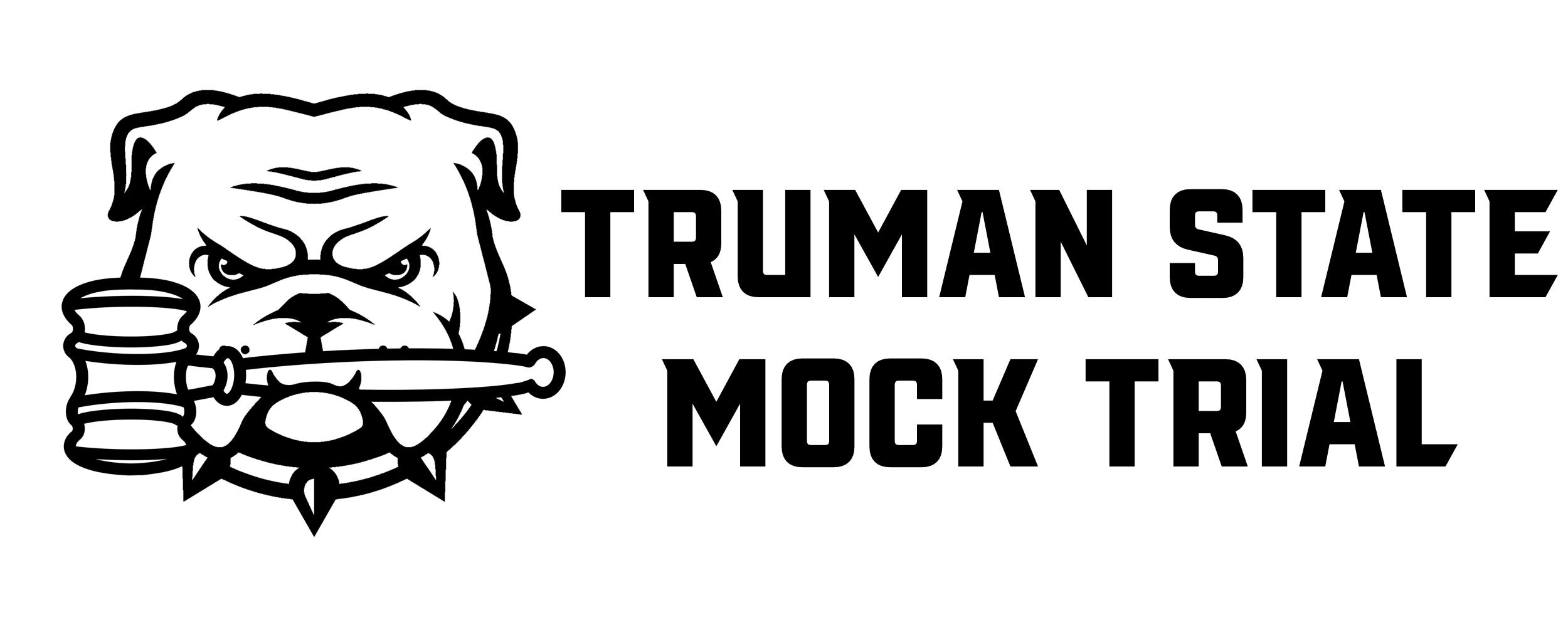Mock Trial at Truman State is a student-run competitive mock trial organization. Throughout the academic year, the team prepares to argue both sides of a fictional legal case. Together we travel and compete in simulated trials against other undergraduate mock trial programs from around the country.
Keep reading for a more in-depth look at what we do.
So like, what even is mock trial?
Mock trial is a competitive event where students portray witnesses and attorneys to simulate a real trial.
At the beginning of each academic year, the American Mock Trial Association (AMTA) issues a “case packet” containing the details of a fictional legal case, including witness statements, case law, and exhibits. Using the content of the case packet, teams prepare the strongest argument they can for both sides of the case (plaintiff/prosecution and defense). They then compete in teams of 6-10 against other schools. Performances are scored on persuasive skill, realism, legal knowledge, and presentation.
Teams
At Truman, our mock trial program is divided into one or more teams, with 6-10 competitors on each team. Only 6 team members compete at a time, 3 as attorneys and 3 as witnesses.
Attorneys: As an attorney, you will learn how to speak persuasively, make objections based on the federal rules of evidence, examine witnesses, and argue in front of a judge.
Witnesses: Witnesses relay compelling testimony on direct examination, defend their story on cross examination, and portray a character convincingly while on the stand.
Over the course of the season, team members will have the opportunity to compete in both roles. Besides preparing their own parts, all team members participate and provide feedback during practices.
Tournaments
Tournaments consist of four rounds (trials), two as the defense and two for the plaintiff/prosecution. Rounds are typically scored by two judges, such that each team finishes with a win-loss-tie record across eight ballots.
Every round follows the same structure:
- Opening statements from both teams
- Plaintiff/prosecution case-in chief
- First witness direct examination, first witness cross examination by defense.
- Second witness direct and cross examination.
- Third witness direct and cross examination.
- Defense case-in-chief
- First witness direct examination, first witness cross examination by plaintiff/prosecution.
- Second witness direct and cross examination.
- Third witness direct and cross examination.
- Closing statements from both sides
More Questions?
Click here to send us an email! Or, bring your questions to our Interest Night which will take place early in the fall semester!
